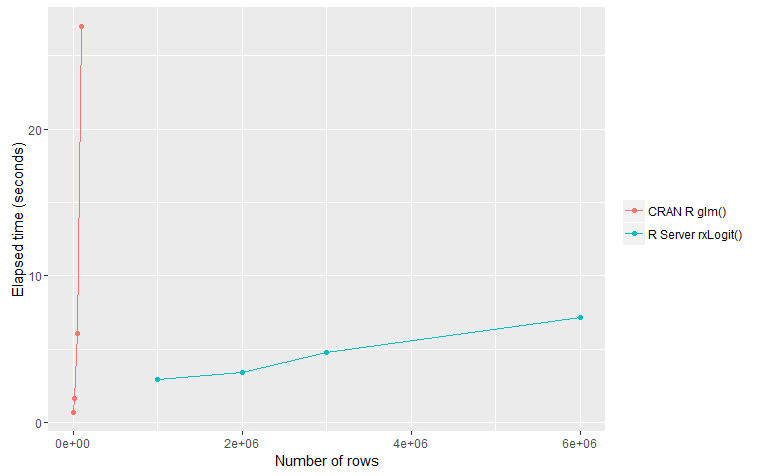R Tools for Visual Studio sample projects
Applies to: ![]() Visual Studio
Visual Studio ![]() Visual Studio for Mac
Visual Studio for Mac
Note
This article applies to Visual Studio 2017. If you're looking for the latest Visual Studio documentation, see Visual Studio documentation. We recommend upgrading to the latest version of Visual Studio. Download it here
This collection of samples gets you started on R, R Tools for Visual Studio (RTVS), and Microsoft Machine Learning Server:
Download the samples zip file and extract to a folder of your choice.
Open
examples/Examples.slnto see two folders in the project:- A First Look at R gives a gentle introduction for newcomers to R.
- MRS and Machine Learning gives examples of how to use R and Microsoft Machine Learning Server for machine learning.
A First Look at R
This sample provides an in-depth introduction to R through the extensive comments in two source files. For the best experience, place the cursor at the top of the file and press Ctrl+Enter to send the code line-by-lie to the R Interactive window. (Lines that install packages might take a minute or two to complete.)
1-Getting Started with R.Rcovers many R fundamentals including using packages, loading and analyzing data, and plotting.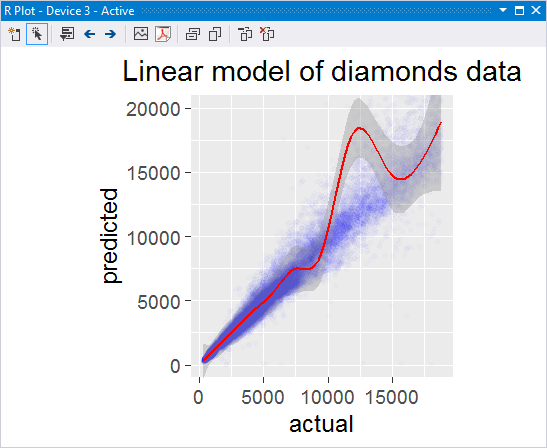
2-Introduction to ggplot2.Rintroduces the ggplot2 graphic package known for its visually appealing plots and simple syntax. This example visualizes earthquake data from Fiji.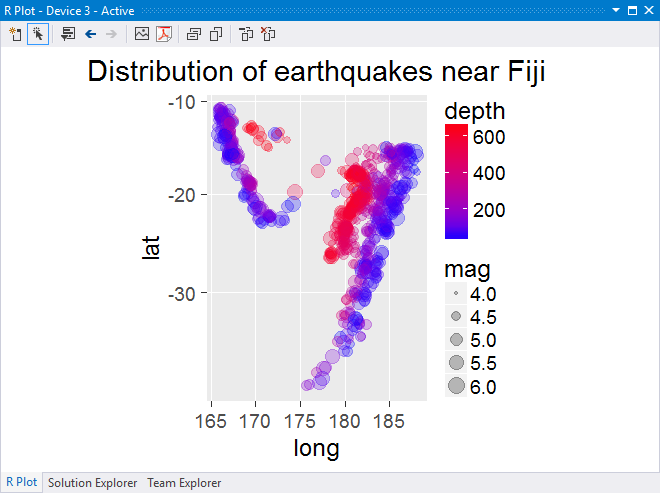
Microsoft Machine Learning Server and Machine Learning
This collection of examples shows how to use R to create machine learning models and to take advantage of Microsoft Machine Learning Server.
As with all examples, open the file, place the cursor at the top, and then step through the code line by line with Ctrl+Enter. The markdown files in each folder also contain additional details.
Benchmarksruns a number of intensive, parallel linear algebra computations to show the performance gains that are possible through the use of Microsoft R Open and the Intel Math Kernel Library (MKL). With simulated data, the benchmarks specifically compare matrix calculations on one thread versus two.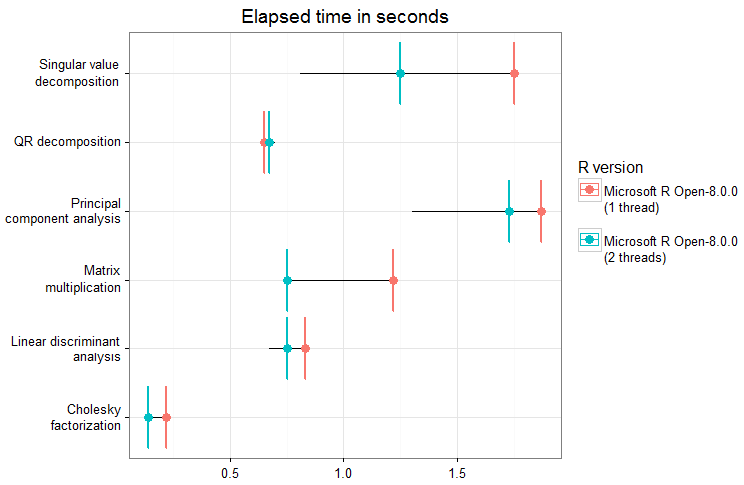
Bike_Rental_Estimation_with_MRScreates a demand prediction model for bike rentals based on a historical data set, using Microsoft ML Server.Data_Explorationcontains three scripts:Import Data from URL.Rshows how to load a URL-identified data file into R.Import Data from URL to xdf.Rshows how to load a URL-identified data file into Microsoft ML Server as an xdf.Using ggplot2.Ris an extension of theA First Look at R/2-Introduction to ggplot2.Rsample, giving a more extensive tour of ggplot2's functionality including interactive 3D plotting.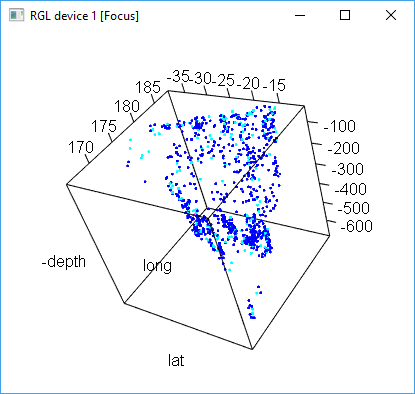
Datasetscontains three .csv files used by other samplesFlight_Delays_Prediction_with_RandFlight_Delays_Prediction_with_MRSshows how to predict flight delays using R, machine learning, and historical on-time performance and weather data.Machine learningcontains three samples for learning to predict flight delays, housing prices, and bike rentals. Together, these samples demonstrate the application of R and Microsoft ML Server to real-world problems. They also show you how to use several popular machine learning models and deploy them as an Azure Web Service using an Azure Machine Learning workspace.R_MRO_MRS_Comparisonis a six-part comparison that shows the similarities and differences of R, Microsoft R Open and Microsoft ML Server with commands, syntax, constructs, and performance.
What's special about Microsoft R Open and Microsoft ML Server?
Microsoft R Open, Microsoft's distribution of R, is different from CRAN R in two important ways:
Better computation performance when used with the Intel Math Kernel Libraries. The libraries are available as a free download from Microsoft for use with Microsoft R Open.
Reproducible R Toolkit ensures that the libraries you used to build your R program are always available to others that want to reproduce your work.
Microsoft ML Server (MLS) is an extension of R that allows you to handle more data and handle it faster. It gives R two powerful capabilities:
Larger data sets without RAM limitations. ML Server can process out-of-memory data from a variety of sources including Hadoop clusters, databases, and data warehouses.
Parallel, multi-core processing. MLS can efficiently distribute computation across all the computational resources it has available. On your personal workstation or a remote cluster, MLS gets an answer faster.
The following comparison shows that MLS and MRO with MKL have significantly better computation performance related to certain matrix calculation than R and MRO without MKL. Simulated data is used in this calculation:
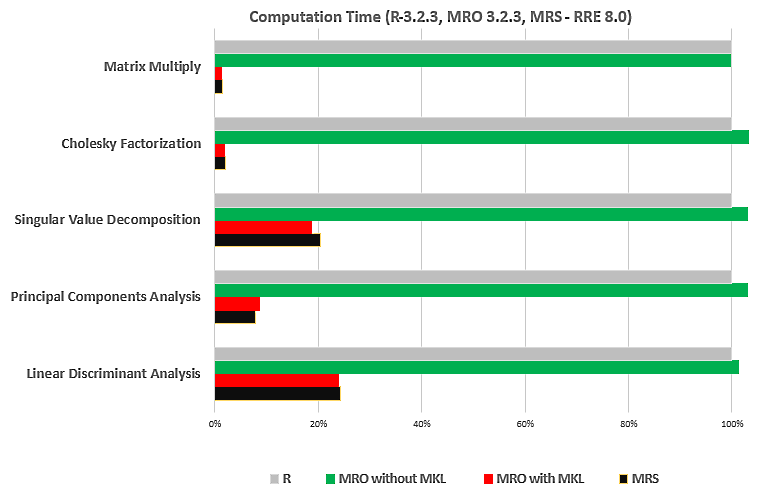
For a technical comparison of R with MRO and MLS, check out Lixun Zhang's detailed discussion on the topic.
The following figure then compares elapsed time in seconds used in building Logistic Regression models to predict flight delays greater than 15 minutes. Elapsed time used in CRAN R increases dramatically when increasing a small number of rows, while MLS increases only by approximately two times. For details of this benchmark, check out the Benchmarks/rxGlm_benchmark.R example.
